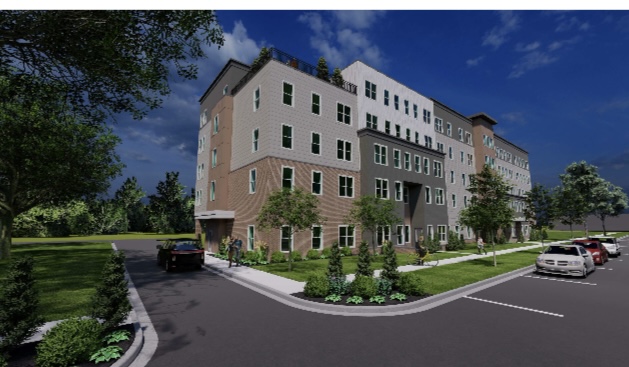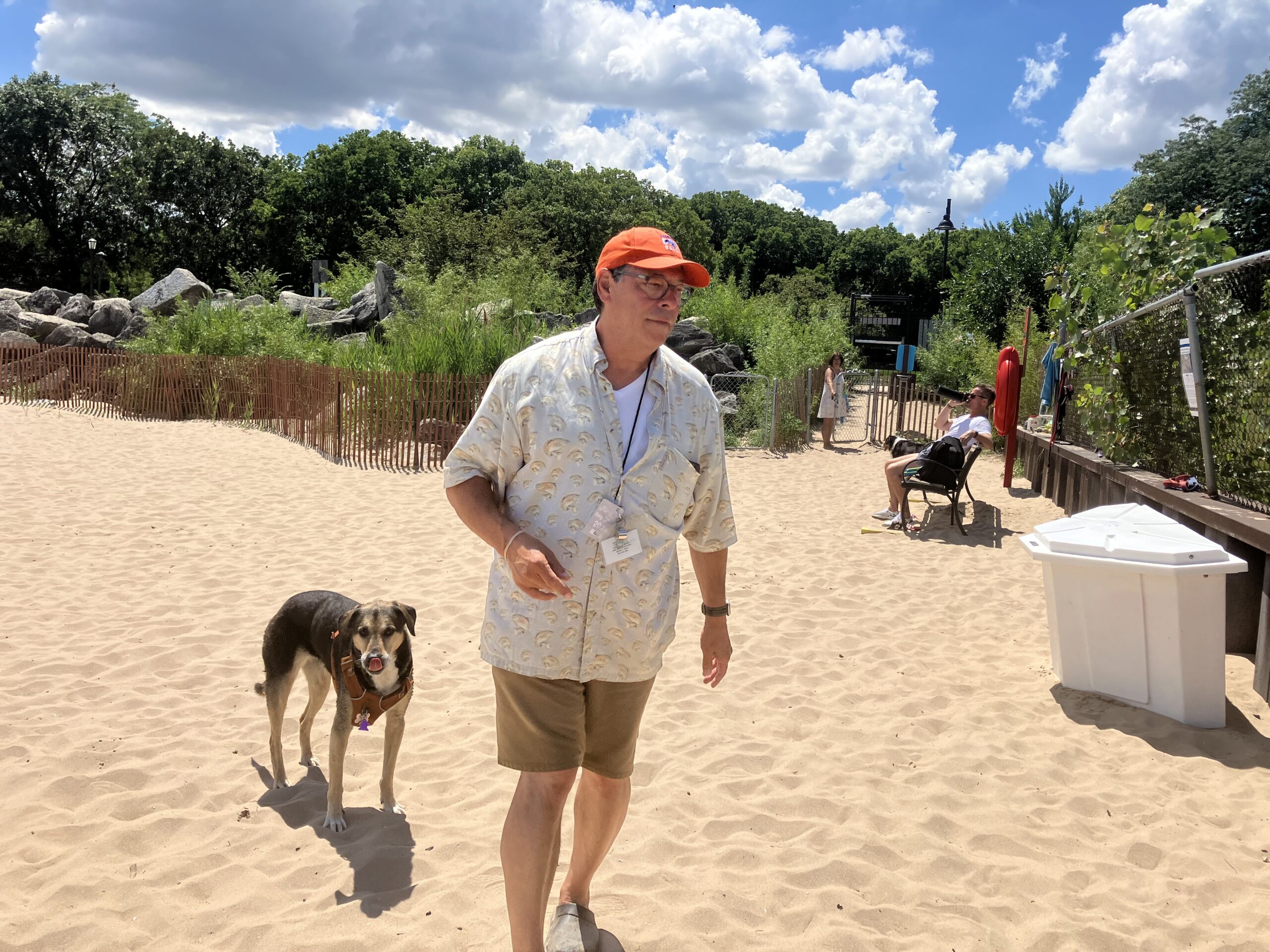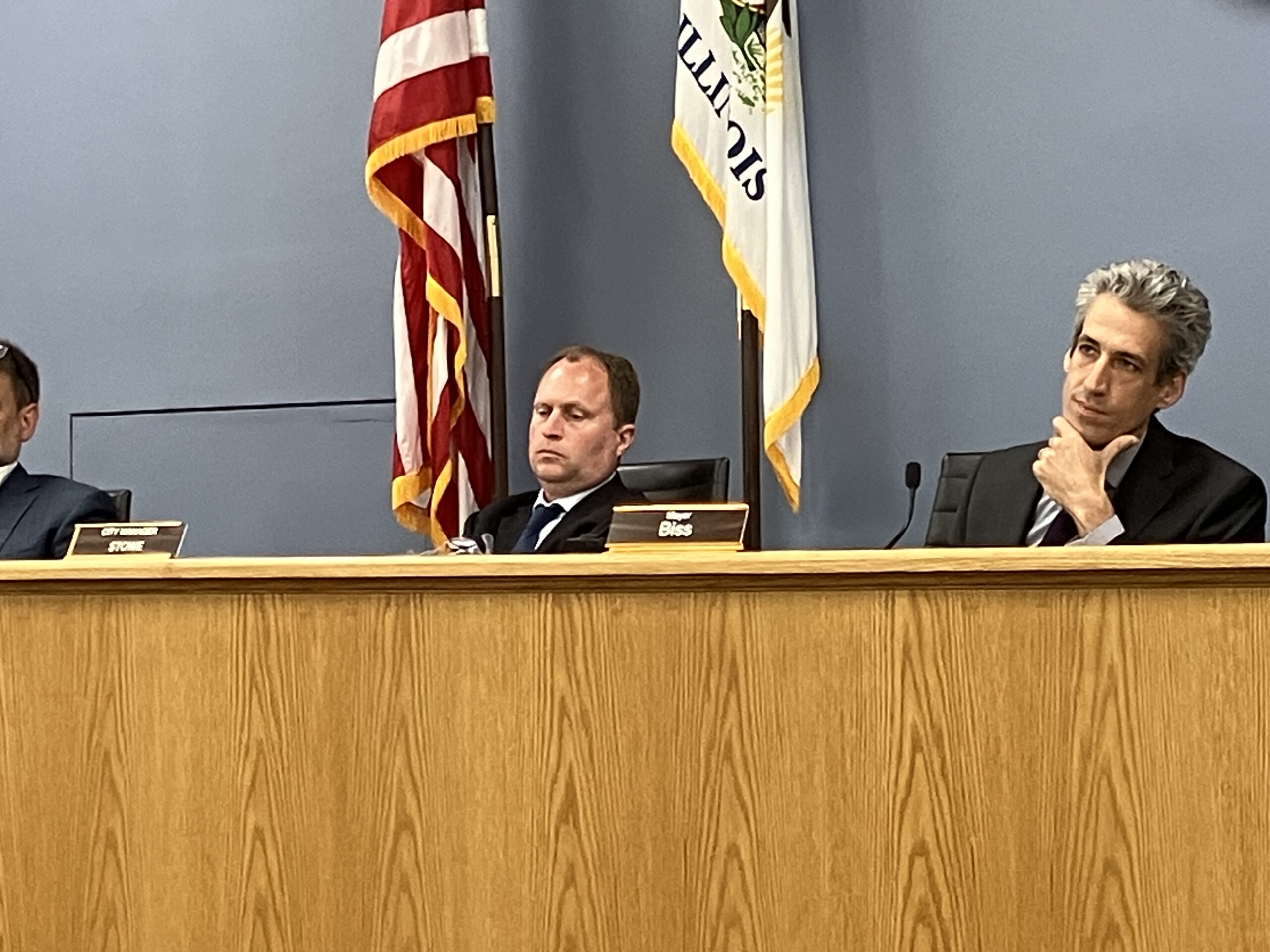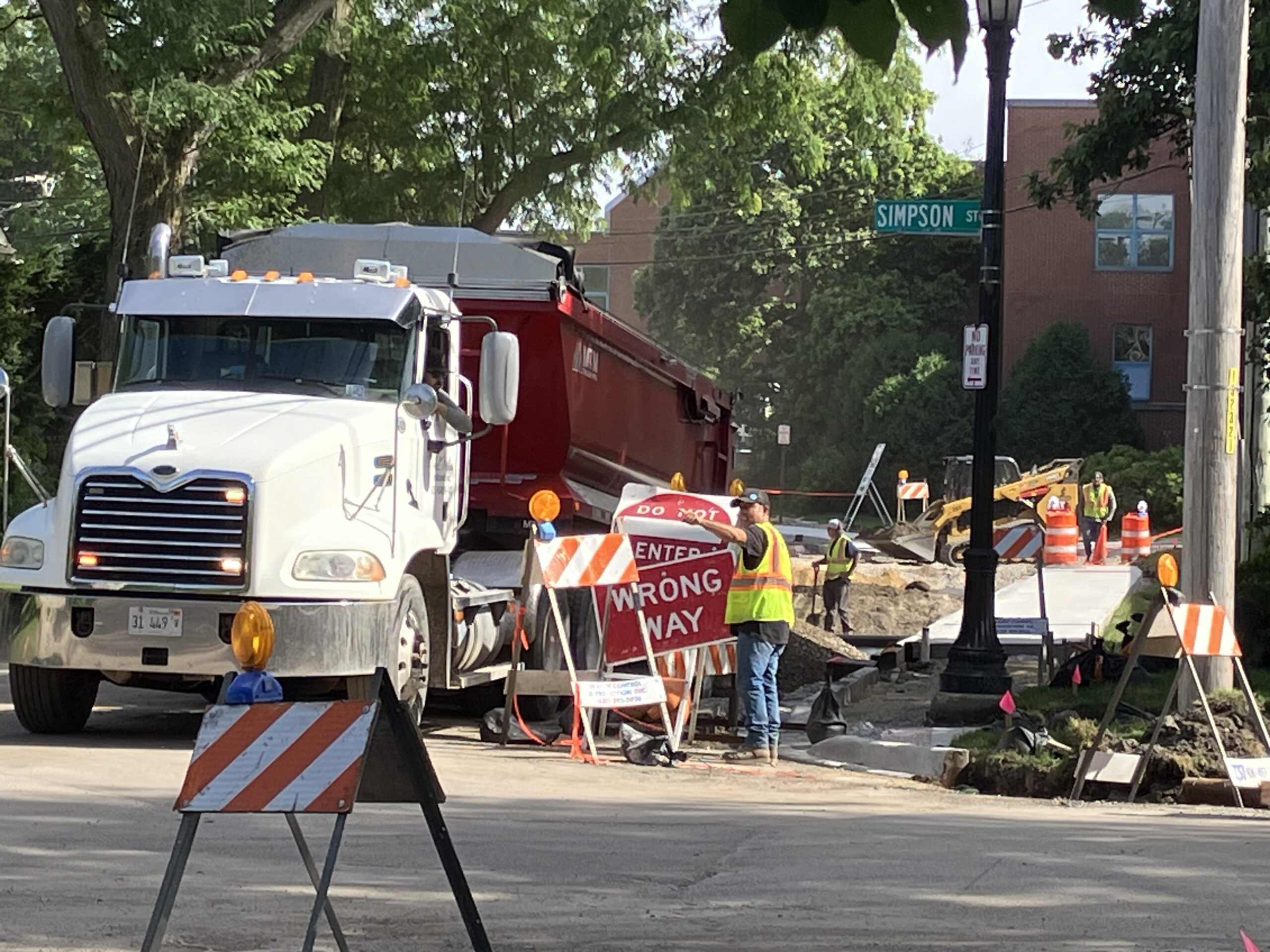By Bob Seidenberg
City and development officials highlighted the affordable housing features of a five-story, 60-unit, mixed-income apartment building planned for the city’s far south end at a well-attended Third Ward meeting Aug. 31.
The Housing Authority of Cook County is teaming up with Cleveland-based PIRHL Developers, an affordable housing organization the city selected to develop the site at 504-514 South Blvd. The Third Ward site includes the city’s parking lot 1 as well as an adjacent property to the west of four townhouse units, which are owned by HACC.
At the meeting, officials called attention to the project’s affordability of rents across income levels – from 30% to 80% area median income, commonly referred to as AMI.

“I hear all the time all about people who want to live in Evanston or have had family who live here but they can’t afford to move back,” said Third Ward Council Member Melissa Wynne, moderating the meeting. “So the need is significant. This is the biggest chunk we will have ever built for more affordable housing across age groups.”
Johana Casanova, senior vice president of development for PIRHL, told residents that a PIRHL study of the housing market found the need “for this type of housing with these income levels is over 10,000 units.”
“So the demand is huge,” she said.
Some project specifics
Casanova said PIRHL has been working with the city for some two years on the redevelopment of the parking lot and the townhomes. She described those homes as “outdated,” noting, “We hope to demolish [them], and incorporate new residents ultimately into the development.”
The proposal for 60 apartments was based on “the lot size of the area and making sure we blended within the community surrounding,” she said.
“It was the desire of the city of Evanston to increase the units for families,” she said. “So we have incorporated about 18 apartments that will be three bedrooms, in addition to [12] two-bedrooms and [30] one-bedrooms.”
The proposed development includes 65 parking spaces – 45 for the new building and 20 for the public – Casanova said.
“We meet and exceed code with that,” she said.
Along with Wynne, the longtime council member for the area, Casanova highlighted the affordability of the development, saying, “The goal was obviously to increase affordability. I think that is needed all over the United States, especially after the pandemic, more and more with inflation, rent increases.”
In this case, she said, 42 of the 60 units will target families or individuals earning up to 80% of area median income.
That figure, according to HUD, is up to $88,240 in annual income for a family in this area, she said.
“That varies by year and it continues to increase as inflation occurs,” she said. “Obviously we have a different mix within that, so we can have families that make less than that – that will be the upper limit – and it really depends on the family’s household.”
Casanova said the $88,000 figure is about the median household income for Evanston.
Range of rents
“Our goal is to access teachers, administrative, maintenance staff [and] working families and keep it local,” she said.
She said their plan calls for having a leasing staff on site: “People will be able just like any other regular development come in, sign up for a waitlist.”
“If you’re [living] in the area that will be kind of the goal,” Casanova said. “So we’re not trying to bring external residents to the development.”
Offering examples about the range of rents, Casanova estimated that a one-bedroom unit would run about $556 a month if targeting a 30% AMI, going all the way to $1,573 if an 80% AMI is used.
For two-bedroom units, the lowest rent would be $1,336 for a family at 60% of the AMI and would go all the way to close to $1,800. Three-bedroom units range from roughly $1,544 at 60% AMI to $2,288 to those at the 80% level.
During the question-and-answer portion of the meeting, though, many people had questions that went beyond affordability, wondering what the impact would be of the extra residents on crime, parking and traffic.
Doree Stein, a longtime resident of the area, asked about residents currently living in the townhomes.
“The people within those have the right to request to be recalled [to] a place that is equal or better,” she said.
Right now, Stein said, “they have their own parking spots. They have a fenced-in yard. They have a shed in the back. There are no other buildings like that in the city of Evanston. They were all offered housing vouchers and they all turned [them] down I was told because they didn’t want to deal with having to move.”
Casanova responded that representatives of the Housing Authority of Cook County – though there were none at the Aug. 31 meeting – have been part of prior meetings with the residents.
“They definitely have a requirement to work with the residents,” she said, adding that “residents will be given notice and HACC will work with them to relocate them temporarily and then they will have the right of return.”
Questions about impact
Calvin Lynn, who has owned a two-flat at 424 South Blvd. since 1995, said he has improved the building since then. He worried how the proposed five-story building next to it “is going to affect my equity.”
During the construction phase, he asked, “are you going to use monitors to see if [the work] affects the structure of my building?”
Another resident asked how the proposed building and its residents would impact the area’s crime rate.
Sue Loellbach, manager of advocacy for Connections for the Homeless, in the audience at the meeting, said studies she’s seen show when “a building like this is built in an area with amenities such as transportation, such as grocery stores, such as schools, there is absolutely no impact on the crime rate – unless the people who are moving into the building lived [in the area] before and are gaining some relief, in which case the crime rate goes down.”
Parking was another concern.
“The parking up and down Hinman [to the east] already is very full,” one resident reported. “I park on the street. My husband has a space, thank goodness for that. But you know that one of the reasons why we moved to this condo building, which was only just about a year and a half ago, was that there was such great parking, so it just makes us feel uncomfortable now. We want to be able to sell our place one day and now it’s going to be harder to do that.”
One resident told officials, “You’ve increased traffic as well. I mean we had a hit-and-run two nights ago on South Boulevard. Two cars just hit each other and took off.”
Robert Hopper, another resident, said he didn’t have as much of a problem about crime as about the overall concept about the project.
“I have an issue with warehousing people in a 60-unit building when you should be focusing on building scattered site, lower [in size] housing for people like they have now.”
“I see those warehouse buildings in Englewood where I work and I see them on the west side and Garfield Park; they’re cookie-cutter,” he said.
Before the meeting ended, another resident asked, “Is there any possibility to make it smaller, to have a smaller footprint? That would cut back on the traffic, the parking, all those issues. Sixty units, that’s a lot.”
Paul Zalmezak, the city’s economic development manager, noted that at its present size, “There are low-income-housing tax credits that we were awarded, which is super competitive.”
“We will lose the project, the project will not move forward” if it’s changed at this point, he said.
Tax break a ‘kick in the teeth’
The Illinois Housing Development Authority administers the tax credit program to encourage private investment in affordable housing.
Developers who win a competitive bidding process on the projects can receive sizable cuts to their new residential buildings; although, the benefits do not kick in until tenants who qualify for affordable housing occupy the units, reported one Chicago Tribune story.
Casanova said only 30% of the applicants receive an award. She said such factors as “the design, the sustainability, the location, the need/demand” are taken into account.
At the meeting, Richard O’Dwyer, a small landlord in the area, pointed out that he also has affordable units.
“My private property taxes are super, super expensive,” he told officials. “My wife and I are the investor of our building. We don’t get any special tax breaks like these hedge fund guys are getting for this building.
“I’m happy that we’re helping people but, you know, to find out that they’re [the investors] not going to be paying full property taxes, that’s kind of a kick in the teeth.”
The issue is next scheduled for a public hearing before the city’s Land Use Commission at 7 p.m., Sept. 13, at the Lorraine H. Morton Civic Center, 2100 Ridge Ave.
Residents’ feedback “only makes the project better at the end,” Zalmezak said at the meeting.
More information about the project is available, including a traffic study, zoning analysis, through a search on the city webpage, cityofevanston.org, using the terms “planned developments” or “proposed developments.”
Residents can contact Zalmezak at pzalmezak@cityofevanston.org or Council Member Wynne at mwynne@cityofevanston.org for more information.




